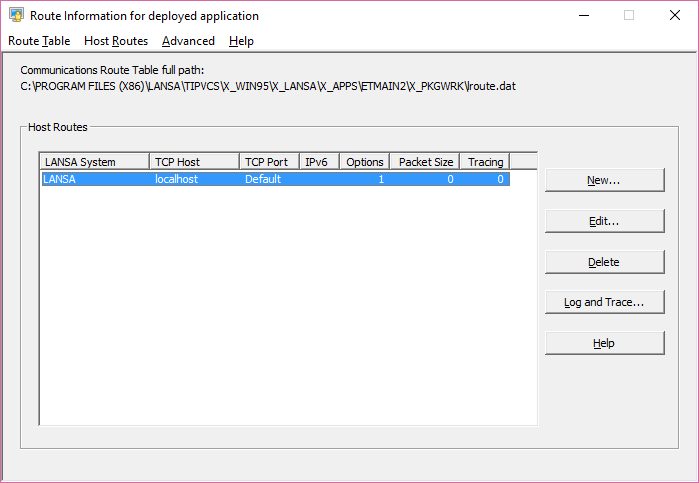9.1 Include Host Route and Listener Tables
The LANSA Communications Administrator is incorporated into the Deployment Tool to allow the creation and maintenance of a communication files specific to an Application. The communication files are the Host Route Table (lroute.dat) and Listener Table (listen.dat).
When the Communication Administrator is first opened default settings are displayed. These files can then be modified as required to support the Application.
When an application is created based on a template, a default entry is automatically created for the Host Route Table (lroute.dat) and Listener Table (listen.dat). The default entry uses the Application Name as the LANSA System Name.
To review or modify the Communication files:
|
Step
|
How to do it
|
|
1. Select Communications Administrator for an application
|
To review or modify Communication files, select the Application in the tree view then press the Communications Administrator icon in the toolbar.

|
|
2. Review or set up the Host Route entries
|
The Route Information for deployed application dialog box will open to display the host route table lroute.dat. The deployment version of the host route table is saved into the Application work folder.
Change, remove and add host route entries in the local communication files as required to support the deployed Application. Closing the dialog box saves any changes.

|
|
3. Review or set up the listener
|
A default listener is also created to ship with the lroute.dat.
The listener does not need to be configured as Listener TCP Port will be prompted during installation with an available port prefilled. The listener is also appropriately set for 32 or 64-bit mode at installation time.
|
|
4. Set appropriate Package settings and options
|
Including the Communication files in an Application does NOT automatically mean they will be installed with a Version or Patch. The appropriate Settings and Installation options must also be selected.
Using an appropriate template to create your Version will ensure the correct settings are selected.
Refer to 9.2 LANSA Communications Package Settings & Options for more information.
|
|
